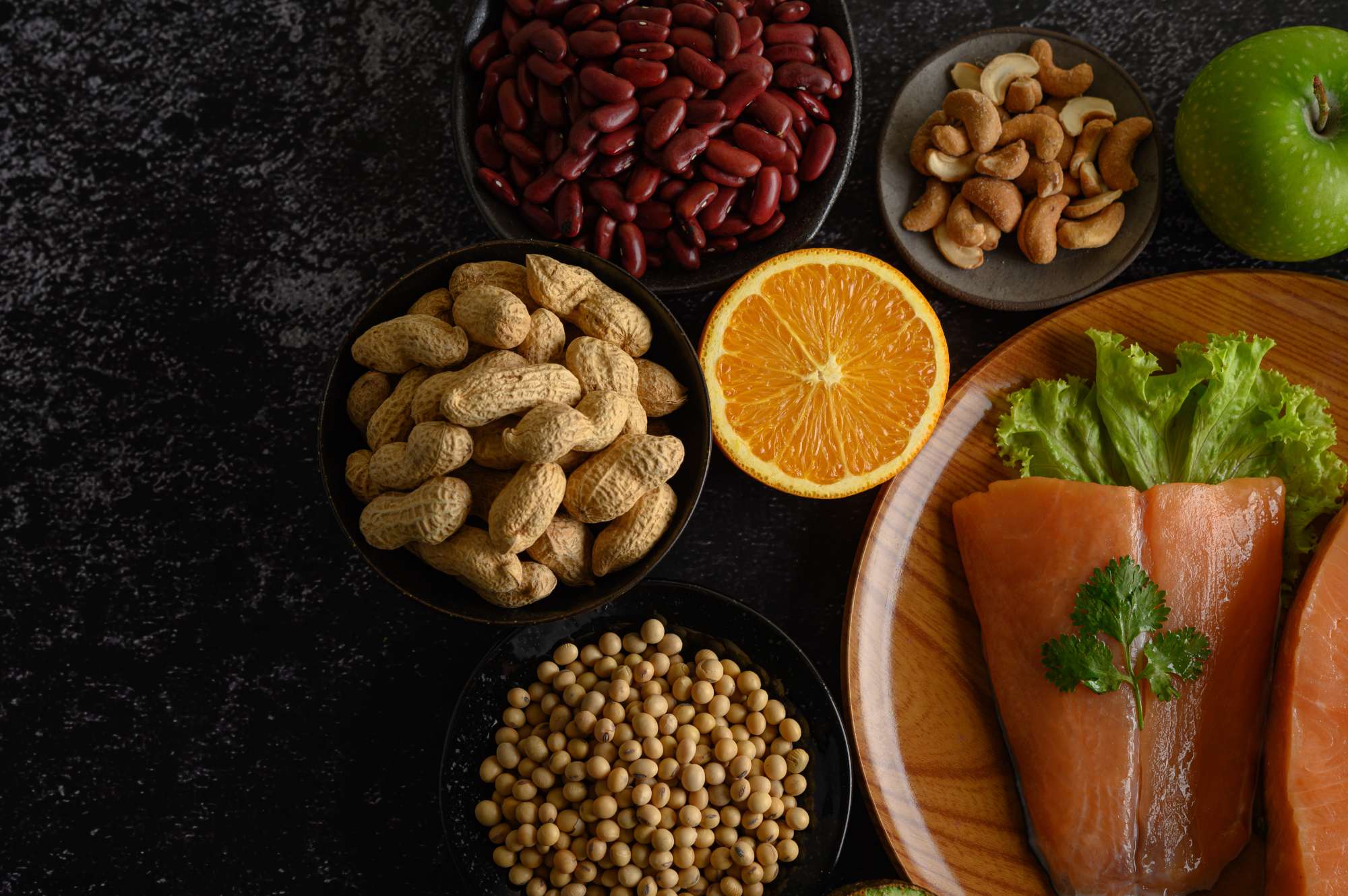Navigating antinutrients in your diet
Navigating antinutrients in your diet
How do antinutrients affect your health? Learn about common antinutrients to understand their role in plant-based foods, their potential benefits, how they affect nutrient absorption, and how to minimize their negative effects for optimal nutrition.
Antinutrients are naturally occurring compounds found in many plant foods that can interfere with the absorption of essential nutrients. Understanding antinutrients and their potential effects can help you make healthy dietary choices.
While antinutrients can be a concern, especially for people on restricted diets or those with nutrient deficiencies, they are generally not a major problem for most people who eat a balanced diet. In this article we cover some common antinutrients, including how you can minimize their negative effects.
How antinutrients work:
– Bind to nutrients: Antinutrients can bind to essential minerals like iron, zinc, and calcium, making them less available for your body to absorb.
– Interfere with digestion: Some antinutrients can disrupt the digestive process, affecting nutrient absorption.
1. Oxalate:
Oxalate, also known as oxalic acid, is a naturally occurring compound found in many plant-based foods. It's a type of organic acid that can bind with minerals like calcium and magnesium, potentially reducing their absorption in the body.
– Found in: Spinach, rhubarb, beets, chocolate, and nuts.
– Interferes with: Calcium absorption.
While oxalate is generally safe when consumed in moderation, excessive oxalate intake can increase the risk of kidney stones. This is because oxalate can bind with calcium in the urine, forming calcium oxalate crystals that can harden into kidney stones.
– To minimize the negative effects of Oxalate:
• Dietary Diversity: Consuming a variety of foods can help balance the effects of oxalate.
• Hydration: Drinking plenty of fluids can help dilute oxalate in your urine, reducing the risk of kidney stones.
• Limit High-Oxalate Foods: If you're prone to kidney stones, consider limiting your intake of oxalate-rich foods, especially if you have a family history of kidney stones.
• Cooking Methods: Cooking can reduce the oxalate content in some foods, such as spinach and rhubarb.


2. Phytate:
Phytate, also known as phytic acid, is a naturally occurring compound found in the outer layer of plant-based foods. It can bind to minerals like iron, zinc, and calcium, making them less available for the body to absorb.
– Found in: Whole grains such as wheat, barley, rice, oats; Legumes like lentils, beans, chickpeas; Nuts special almonds, cashews, walnuts; Seeds such as sesame seeds, pumpkin seeds, sunflower seeds; And soy products, including tofu, tempeh, edamame.
– Benefits:
While phytate can interfere with nutrient absorption, it also has some potential health benefits, such as:
• Antioxidant properties: Phytate has antioxidant properties that can help protect cells from damage.
• Lowering cholesterol: Some studies suggest that phytate may help lower cholesterol levels.
– Interferes with: Iron, zinc, and calcium absorption.
– To minimize the negative effects of phytate:
• Soaking and sprouting: Soaking grains and legumes before cooking can help reduce phytate levels.
• Fermentation: Fermenting foods like yogurt and sauerkraut can also break down phytate.
• Dietary diversity: Consuming a variety of foods can help balance the effects of antinutrients like phytate.
.jpg)
3. Tannins:
Tannins are a group of polyphenols found in plants. They are responsible for the astringent or bitter taste in many foods and beverages, such as tea, coffee, and red wine. Tannins can have both positive and negative effects on human health.
– Found in: Tea, coffee, red wine, and some nuts and fruits.
– Some potential benefits of tannins
• Antioxidant activity: Tannins can help protect cells from damage caused by free radicals.
• Anti-inflammatory properties: Tannins may have anti-inflammatory effects, which can be beneficial for conditions like arthritis and heart disease.
• Antimicrobial properties: Some tannins have antimicrobial properties, which can help inhibit the growth of bacteria and fungi.
– Interferes with: Iron absorption
Excessive tannin intake can interfere with iron absorption. This is because tannins can bind to iron in the digestive tract, making it harder for the body to absorb.
– To minimize the negative effects of Tanin:
• Pairing with vitamin C: Consuming foods rich in vitamin C (like citrus fruits) can help enhance iron absorption and counteract the effects of tannins.
• Moderation: Enjoying these beverages in moderation can help minimize the negative impact on iron absorption.

4. Goitrogens
Goitrogens are substances found in certain plants that can interfere with thyroid hormone production. This can lead to goiter, an enlargement of the thyroid gland. While goitrogens were once a major concern, today's diverse diets and improved food processing methods have significantly reduced the risk of goiter due to goitrogen intake.
– Found in: Cruciferous vegetables such as broccoli, cabbage, cauliflower, kale, and brussels sprouts; Soy products usch as Tofu, tempeh, soy milk; Cassava; Millet; Peanuts; Pears.
– Interferes with: Thyroid hormone production.
– To minimize the negative effects of Goitrogens:
• Cooking: Cooking these vegetables can reduce the goitrogenic effect.
• Variety: Include a variety of goitrogenic vegetables in your diet to minimize the risk of thyroid issues.

5. Saponins
Saponins are a group of naturally occurring compounds found in various plants, including legumes, soy products, and certain grains. They are known for their soapy or foaming properties when mixed with water, hence the name "saponin."
– Found in: Legumes and soy products.
– Interferes with: Nutrient absorption.
While saponins can have some potential health benefits, they can also interfere with nutrient absorption in the digestive tract. Some of the negative effects of saponins include:
• Reduced nutrient absorption: Saponins can bind to minerals like iron and zinc, making them less available for the body to absorb.
• Digestive issues: In some individuals, saponins may cause digestive symptoms like bloating, gas, and diarrhea.
– To minimize the negative effects of Saponins:
• Soaking and cooking: Soaking and cooking legumes can help reduce the saponins content.
• Variety: Incorporate a variety of protein sources to balance the effects of saponins.

6. Trypsin Inhibitors
Trypsin inhibitors are substances found in certain plants, particularly legumes and soybeans.
– Found in: Soybeans is a major source of trypsin inhibitors, including tofu, tempeh, and edamame; Legumes such as beans, lentils, and peas; Whole grains such as wheat and barley.
– Some beneficial properties:
• Anti-inflammatory effects: Some studies suggest that trypsin inhibitors may have anti-inflammatory properties.
• Antioxidant properties: Trypsin inhibitors may also have antioxidant properties, which can help protect cells from damage.
– Interferes with: Protein digestion.
Excessive intake of trypsin inhibitors can lead to digestive problems, such as bloating, gas, and diarrhea. They can interfere with the digestion of proteins by blocking the enzyme trypsin, which is essential for breaking down proteins in the small intestine.
– To minimize the negative effects of Trypsin Inhibitors:
• Cooking: Cooking can deactivate trypsin inhibitors.
• Fermentation: Fermenting soybeans and legumes can also reduce the activity of trypsin inhibitors.

7. Lecithin:
Lecithin is a phospholipid. It is a component of cell membranes and plays a role in various biological processes.
– Found in: plant and animal tissues
– Interfere with: iron absorption.
While lecithin is generally considered safe and beneficial, excessive intake can interfere with iron absorption.
– To minimize the negative effects of Lecithin:
• Moderate consumption: Enjoy lecithin-containing foods in moderation to avoid excessive intake.
• Dietary diversity: Consuming a variety of foods can help balance the effects of antinutrients like lecithin.
• Iron-rich foods: Pair lecithin-containing foods with iron-rich foods to help enhance iron absorption. Vitamin C can also help improve iron absorption.
• Consult a healthcare professional: If you have concerns about excessive lecithin intake or iron deficiency, consult with a healthcare provider.

It's important to note that:
– Most people don't need to be overly concerned about antinutrients. When consumed as part of a balanced diet, their negative effects are typically minimal.
– The amount of antinutrients in a food can vary depending on factors like variety, growing conditions, and preparation methods.
– For individuals with specific dietary concerns or health conditions, consulting with a registered dietitian or healthcare professional is recommended.
Remember:
While antinutrients are present in various plant-based foods, consuming a balanced diet and incorporating the strategies mentioned above can help minimize their negative effects. It's always a good idea to consult with a healthcare professional or registered dietitian for personalized advice, especially if you have any underlying health concerns.
Compiled and written by Crocus Media
Products
.jpg)
Chrysanthemum tea
Chrysanthemum tea is a herbal tea with bitter tastes, coolness, heat clearing, helps reduce acne, nourishes the body, cools the liver, detoxifies, curing neurasthenia, support cancer treatment, ... Chrysanthemum tea is made from 100% natural herbs, no preservatives, no flavoring, safe for health.
.jpg)
Rosa Centifolia tea
Dried Rose tea is selected from the budding rose buds. Natural aroma, easy to drink, has many health benefits such as supporting digestion, reducing stress, detoxifying, beautiful skin, helping to lose weight, slow aging,... Dried rose tea is made 100% from natural, no preservatives, no flavoring, safe for health.



